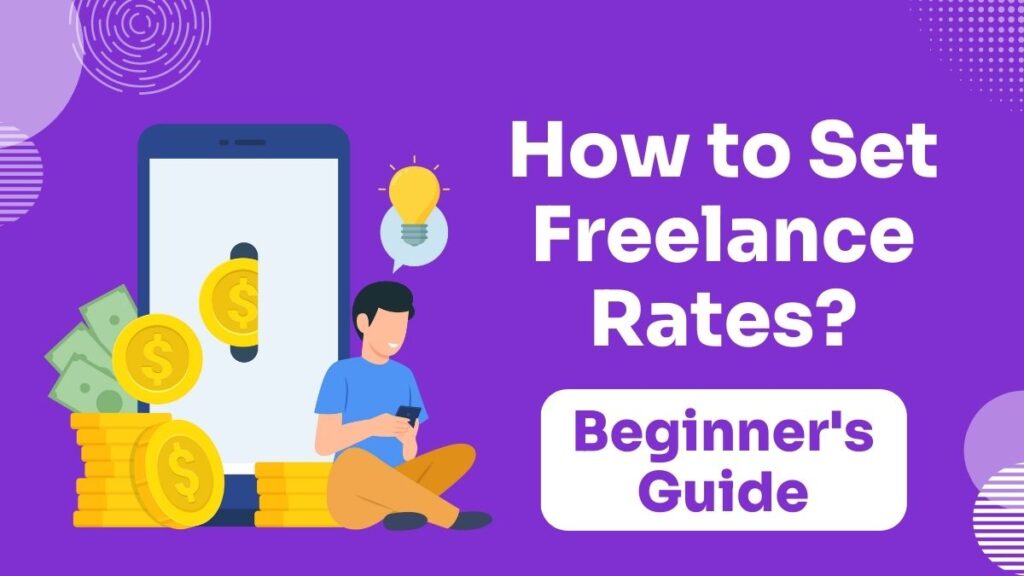
If you are here, you must be exasperated by the question, ‘How much should I charge as a freelancer.‘
Well, setting freelance rates is one common dilemma shared by all freelancers around the planet when they start freelancing. However, long story short, your pricing approach must strike an equitable equilibrium between your value proposition, your intended audience, and the fiercely competitive marketplace.
In other words, setting your charges too modestly could result in you not being compensated well for your service, thereby leaving cash on the table for others.
It’s crucial to periodically analyze your prices to ensure that they maintain market competitiveness and are in line with the value offered. All in all, setting rates is a challenge. The good news is the cost you determine is not fixed in stone.
Hence, if you are constantly looking for the answer to how to set freelance rates or what is the regular rate for freelancers, here’s the catch.
This blog post lists the basics of how to price yourself as a freelancer in 2024, along with the factors that influence the rates in the market.
Let’s dig in!
What Should My Freelance Rate Be: Factors to Consider When Setting Your Freelance Rates
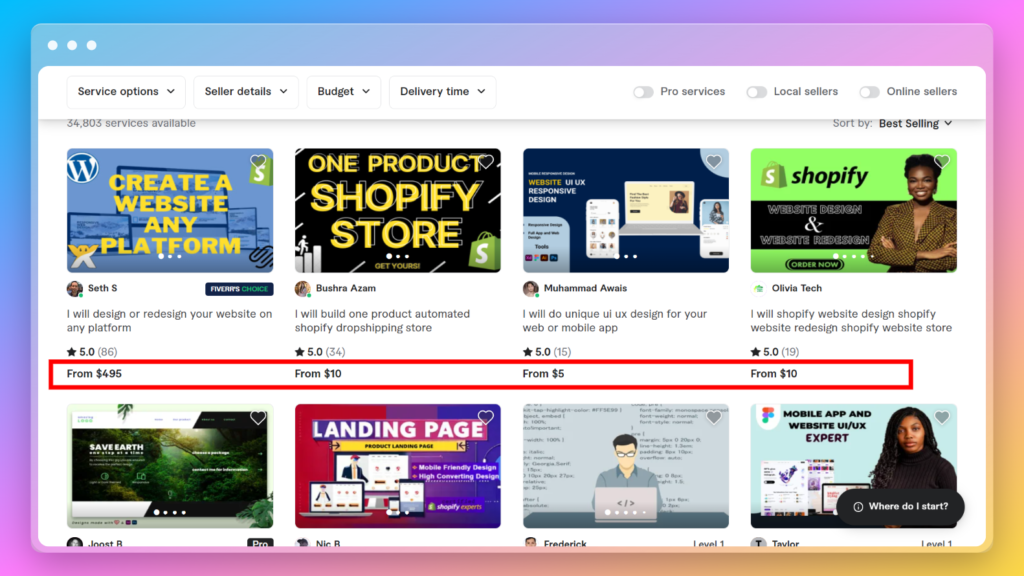
Before determining your freelance rates, you must consider a few factors that directly impact the rates you charge. Below are a few pointers that should be considered before determining your charges.
1. Your Operating Expenses
When determining the hourly rate for a freelance writer, you must consider your overhead expenses. This covers costs associated with tools, certain applications, software, and other workplace expenses.
2. Communication
Communication with clients is essential. You must comprehend the client’s objectives and how the undertaking fits into their wider plan. You can increase the worth of what you offer or broaden the scope of your offerings by communicating effectively.
3. Market demand
Your abilities and offerings will affect your prices as well. If demand is abundant for what you offer and there is a lack of qualified individuals in your sector, you may charge higher rates.
4. Industry benchmarks
Examining industry norms for freelance rates in your line of work is crucial to ensure you’re pricing a competitive and equitable cost.
5. Project difficulty
The job’s complexity will also affect your freelance rates. Complex projects could demand greater amounts of time and work. This, in turn, justifies a higher rate.
6. Commitment of time
Your charges will also be influenced by how much time you are devoting to a project. If a project demands a lot of time from you, you can bill more money to make up for it.
7. Client spending
When determining your charges, it’s critical to take your client’s budget into account as well. If you charge too much, it could be challenging to find freelance clients. On the other hand, if you charge too little, your services might not be valued at all.
Do Freelancers Set Their Own Rates?
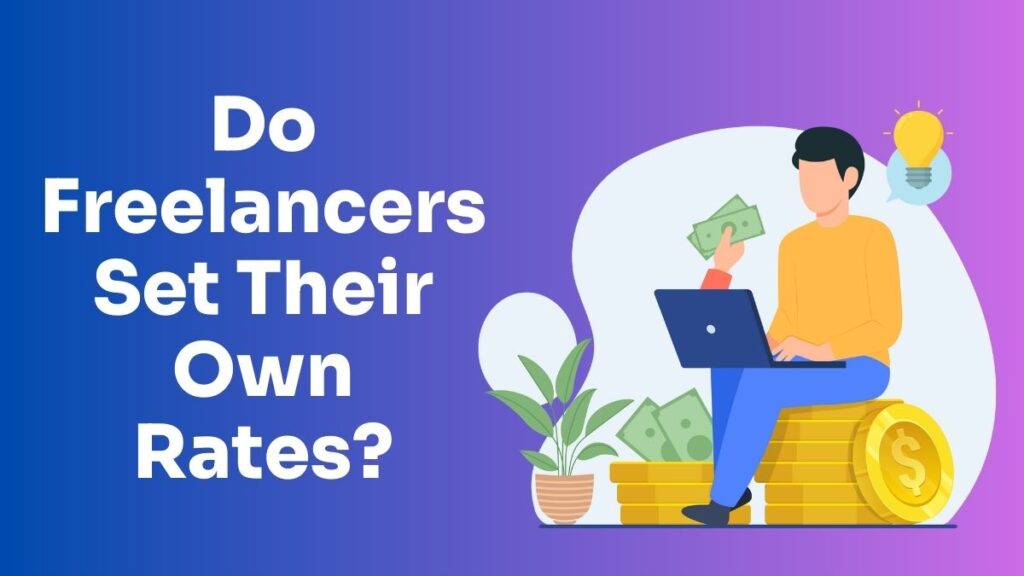
To an extent, yes. In fact, this is the best part of freelancing. Freelancers set their own rates. However, it cannot be understated that there are a few factors that affect the rates of freelancers.
Below listed are 5 factors that have a direct impact on the rates you charge.
1. Your Level of Skill and Proficiency
Your past work and degree of expertise will strongly influence the prices you may set as a freelancer. If you’re just starting out, remember that you might not be prepared to make a profit the same amount as a more seasoned freelancer. Nevertheless, you can always establish fair pricing that corresponds to your skills.
2. Your area of expertise
Your charges may vary depending on the market or sector you serve. For instance, web design specialists could end up billing more than individuals who provide basic services related to graphic design.
3. Your Location
This is another factor. It’s possible for freelancers in regions with a greater cost of living to earn higher prices than those in regions with a reduced cost of living.
4. Education
You might be able to ask for extra charges if you hold a graduate degree or a professional certification.
5. The project scope
Say, for example, you’re a writer. A blog of 1000 words with little research vs. a heavily researched blog should have different project rates.
Asking for the same rate for every project is not wise. Note that the pricing depends on the content worth to your client, the required research, and the difficulty level.
6. Industry of your client
A firm associated with the technology industry will naturally come forward to offer you higher prices than a small business unit. Herein, you need to charge accurately based on the market and not just your experience. Irrespective of your experience, you deserve a reasonable rate.
Different Pricing Strategies for Freelancers: Which is Better?
Recognizing the various rates associated with working as a freelancer will help you decide what should be the hourly rate for a freelancer for beginners, or any specific field, say, what is a good hourly rate for a freelance writer.
The three main pricing philosophies freelancers use include: Project-based pricing, value-based pricing, and hourly rate pricing.
Each pricing strategy has its own set of benefits and drawbacks. You may set the right prices for your freelance services and create a successful business by being aware of these pricing methods.
Hourly Rate Pricing
If you’re wondering how much do freelancers charge per hour, here’s your answer. This pricing strategy allows you to bill an agreed-upon hourly cost for your services.
Choosing an acceptable hourly rate when employing this pricing method is crucial. It considers the project’s complexity, your experience, and industry norms. The hourly rate also includes other costs like overhead, taxes, and equipment prices in all.
- Simple to calculate: Customers who wish to know the specific cost of your services can benefit from this. Using a freelance hourly rate calculator might also be useful here.
- Flexibility: Pricing at an hourly rate offers flexibility if the task takes longer than anticipated or more work is needed. You might charge for the additional time and work to ensure that you are paid for your efforts.
Project-Based Pricing
Herein, you set a flat rate for the project as a whole, irrespective of the number of hours it takes to finish. This pricing approach is advantageous when focusing on projects with a specified scope and deliverables.
When deciding the project charge, it’s crucial to consider the project’s intricacy and any prospective supplemental costs.
- Cost predictability: The project’s cost is predetermined so clients can plan their budgets appropriately. This can be useful for customers who are curious about the cost of your services.
- Encourages effectiveness: Instead of spending extra time on the job, the goal is to do it swiftly and effectively. Clients with a deadline for the work’s completion may find this useful.
Value-Based Pricing
Value-based pricing entails basing your prices on the benefits you offer to the customer.
To provide a specific output or result that brings value to the customer while using this pricing method, you must be aware of the client’s company’s goals and objectives.
- Aligns incentives: Value-based pricing balances the incentives of the client and the freelancer. The customer is motivated to set clear project goals and expectations, whereas the freelancer is motivated to perform high-quality work that adds value to the client.
- Increases the potential for profit: Freelancers can make more money by charging a value-based fee instead of an hourly rate. This is especially true for tasks that call for specific expertise and experience.
Tips for Negotiating Freelance Rates
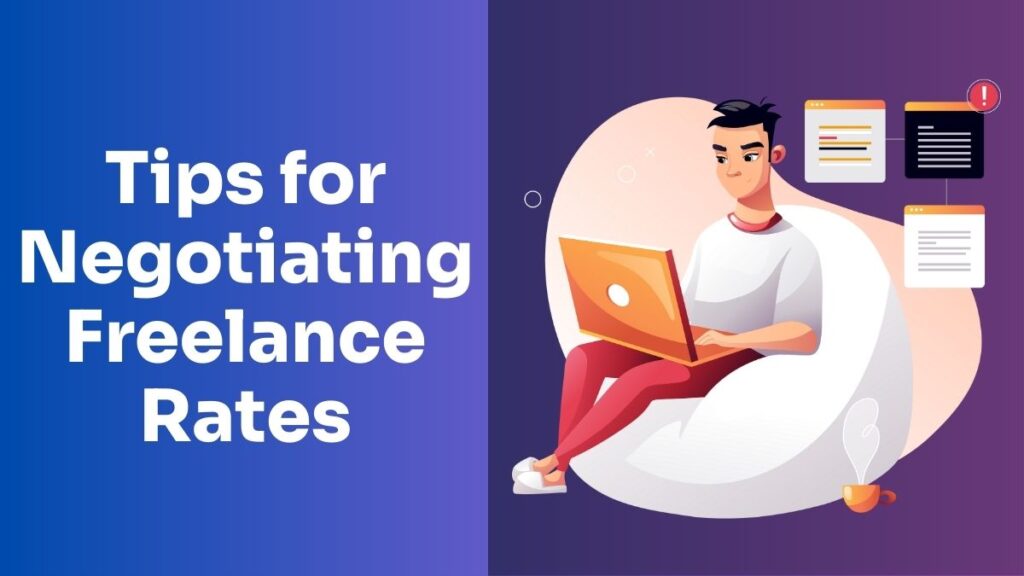
It might be difficult to settle on freelancing pricing. In fact, how to raise your rates as a freelancer is another concern. Nonetheless, with some planning and good communication abilities, you can come to an agreement that benefits you and the client you serve.
Here’s how to negotiate your freelance rates.
- Be truthful: Be open and honest with your clientele about your prices and what they cover. Be explicit regarding what is and isn’t included in your pricing, and clarify how your charges are determined.
- Be adaptable: Be willing to compromise. Be loose with your pricing, but take the quality of your offerings seriously. For bigger projects or long-term clientele, think about providing a discount.
- Make a written agreement: When both you and the client have reached an understanding, including the rates and the nature of the service in a formal agreement or a contract.
Are you a freelancer that is over-burdened with heaps of freelance work?
Stress not, because we have covered some effective ways to avoid freelance burnout and maintain a healthy work-life balance in this blog.
How to Raise Your Rates as a Freelancer? (With Examples)
Are you a freelancer looking to increase your earnings and take your freelancing career to the next level?
One effective way to do so is by raising your rates. In this blog post, we’ll explore practical strategies and tips on how you can confidently raise your rates as a freelancer.
By implementing these techniques, you’ll increase your income and gain more recognition for your expertise and value in the market.
Now let’s dive into each of these techniques one by one:
1. Assess Your Market Value
Start by evaluating your current market value as a freelancer.
Research industry standards, rates charged by other professionals with similar experience and skills, and the demand for your services.
Websites like PayScale and Glassdoor can provide valuable insights into average freelance rates in your field.
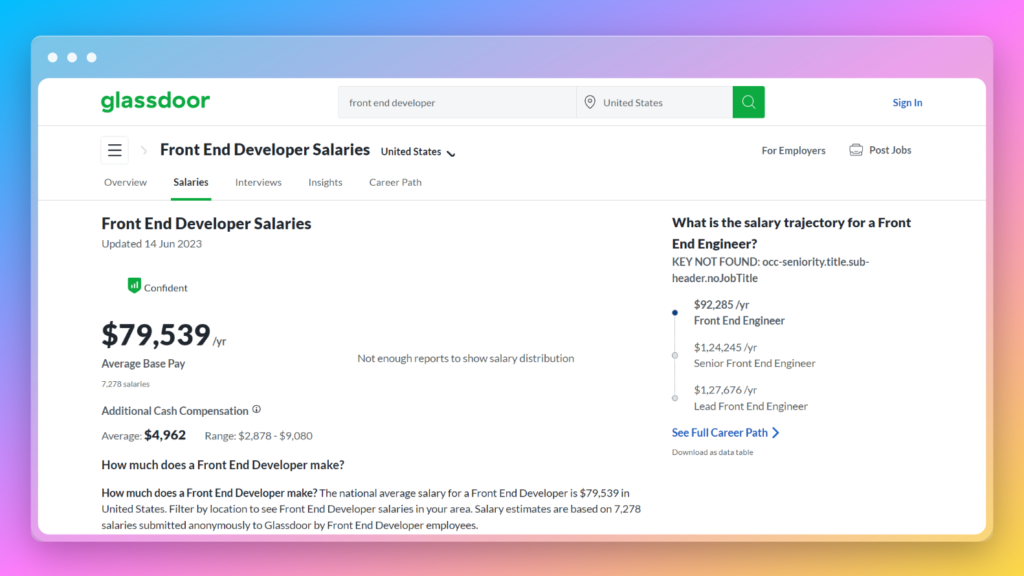
Example: If you’re a freelance graphic designer specializing in branding, check out the best freelancing websites and industry-specific forums to see what other branding experts charge for similar projects. Understanding the market will help you set a competitive rate.
2. Highlight Your Experience and Expertise
When raising your rates, it’s crucial to demonstrate the value you bring to clients.
Showcase your expertise, years of experience, relevant certifications, and successful projects you’ve completed.
Create a professional freelance portfolio or case studies that highlight your skills and achievements.
Example: As a freelance content writer, you can mention the number of blog posts you’ve written, the positive impact on client websites’ traffic and conversions, and any recognition or awards you’ve received for your writing.
3. Communicate Your Value Proposition
Clearly communicate the benefits and unique value you provide to your clients in your bid proposal.
Related: Learn how to write a bid proposal in Freelancer?
Explain how your services can solve their problems, improve their business, or save them time and money.
Emphasize the return on investment (ROI) they can expect by working with you.
Example: If you’re a freelance social media manager, emphasize how your strategies have helped clients increase their online engagement, followers, and, ultimately, conversions. Mention any specific metrics, such as a 30% increase in website traffic or a 50% boost in sales through social media campaigns.
4. Gradual Increment
Rather than drastically increasing your rates overnight, consider implementing a gradual increment strategy.
Start by raising your rates slightly for new clients and gradually increasing them for existing ones. This allows you to adjust to higher rates while maintaining client relationships.
Example: If you currently charge $50 per hour for your web development services, you can increase it to $60 per hour for new clients and gradually raise it to $70 per hour for existing clients after a few months of successful collaboration.
5. Provide Additional Value
To justify a rate increase, offer additional value-added services or perks.
These can include extended support, faster turnaround times, exclusive access to resources or templates, personalized consultations, or enhanced deliverables.
This not only justifies your higher rates but also strengthens your client relationships.
Example: If you’re a freelance photographer, you can offer clients a complimentary mini photo shoot, an extra hour of editing, or a personalized online gallery as part of your upgraded package.
6. Reassure Clients of Quality
Assure your clients that despite the rate increase, the quality of your work will remain top-notch.
Offer testimonials or reviews from satisfied clients to showcase your track record of delivering exceptional results.
Reinforce their trust in your skills and professionalism.
Example: Share testimonials from previous clients highlighting how your services exceeded their expectations, improved their business, or brought their vision to life. Positive feedback adds credibility and reassures potential clients.
7. Continuously Improve and Update Your Skills
Stay updated with the latest industry trends, technologies, and best practices. Invest in professional development, attend conferences, participate in online courses, or earn certifications.
You can justify higher rates by continuously improving your skills based on your enhanced expertise and up-to-date knowledge.
Example: If you’re a freelance web designer, you can mention attending a web design conference where you learned about the latest UX/UI trends and how to create responsive designs that improve user engagement and conversions. Clients will appreciate your commitment to staying at the forefront of your field.
Wrapping It Up
Now that you are familiar with the fundamentals of establishing pricing for your freelance writing, you’re prepared to set freelance rates effectively.
Make sure you bill what you must to maintain your standard of living, regardless of what a rate guide suggests or what other people are charging. You can also take the help of a freelance rate calculator to check your chargeable rates.
All in all, in order to get the best out of the freelance world, start seeking out better clients and setting reasonable rates. Remember, clients will only value your time and abilities if you do that to them!
Frequently Asked Questions
1. How much do freelancers charge per hour in India?
As per PayScale, freelance writers in India earn around 4.91 USD hourly. However, it depends from individual to individual, experience, expertise, location, and many other factors.
2. How do I set my hourly rate?
Setting hourly rates is quite easy. You must divide your annual salary (desired) + your expenses by the number of chargeable hours. Next, you can round the calculated figure to the nearest dollar, and voilà!
3. Should I negotiate freelance rates?
Yes. Offering ranges is advisable while negotiating your salary. Freelancers who don’t negotiate generally miss lucrative revenue, delay their own growth, and lose potential freelancing opportunities for the future.
4. What should be per hour rate on Freelancer for beginners?
A beginner on Freelancer can easily make around $10- $25 per hour. As a beginner, you might lack experience, clients, portfolios, or case studies. Hence, bear in mind that the rates depend on the field and experience.
5. What is a good hourly rate for a freelance writer?
The hourly rate for a freelance writer can vary depending on factors such as experience, expertise, industry, and location. On average, freelance writers charge between $25 and $100 per hour. However, rates can go higher for specialized niches or highly experienced writers.
6. What is the hourly rate for PR freelance?
The hourly rate for PR freelancers can vary depending on factors such as experience, location, industry, and scope of work. On average, PR freelancers charge between $50 to $150 per hour. However, rates can go higher for seasoned professionals with extensive expertise and a strong track record of delivering impactful PR campaigns.



